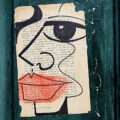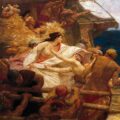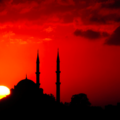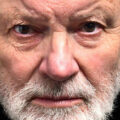Birds, Not (John) Cages: on Dean Young’s Art of Recklessness
 In his 170-page paean to reckless impulse, Dean Young spurns consistency, “over-thinking,” and all emphasis on craft, procedures, and technique. He casts out discipline and hard work, perfection and conventional thinking, if not convention per se. Even communication, contrasted with expressiveness, is death and ruination to the poem, which thrives on the primitive and experimental, the imagination, “the spark,” and on joy, spontaneity, messes, and errors. Young favors gewgaws and thingamabobs and dojiggers—physicality—over signs and abstractions; he favors chance over design, the irrational over the reasonable, humor over profundity, tantrums over civility, puzzlement and nonsense over clarity. The poem stands above its critique: “Poetry is always in advance of criticism.” The new transcends the old, though he also acknowledges that we should not fetishize the new or engage in novelty for its own sake.
In his 170-page paean to reckless impulse, Dean Young spurns consistency, “over-thinking,” and all emphasis on craft, procedures, and technique. He casts out discipline and hard work, perfection and conventional thinking, if not convention per se. Even communication, contrasted with expressiveness, is death and ruination to the poem, which thrives on the primitive and experimental, the imagination, “the spark,” and on joy, spontaneity, messes, and errors. Young favors gewgaws and thingamabobs and dojiggers—physicality—over signs and abstractions; he favors chance over design, the irrational over the reasonable, humor over profundity, tantrums over civility, puzzlement and nonsense over clarity. The poem stands above its critique: “Poetry is always in advance of criticism.” The new transcends the old, though he also acknowledges that we should not fetishize the new or engage in novelty for its own sake.
Young’s resistance to convention in poetry is the resistance of the young—no pun intended—to authority, to parental or societal control. “Hamlet,” he writes, “retains his liberty through a resistance to any sort of coherence of self by which he could be sensibly manipulated.” The trouble begins when Young attempts a philosophical scaffolding for what would be best left as a plea for vitality and vigor. A simple call to rejoice in these pleasures, however, is not the goal. For Young has fall in thrall to Roland Barthes, the French intellectual and structuralist critic. Barthes and other mid-twentieth century structuralists posited a distinction between language as representation and language as expression. “The writer’s language,” Barthes wrote, “is not expected to represent reality, but to signify it.” Young joins the critic in rejecting representation, for political as well as aesthetic reasons. “Perhaps,” Young writes, “the drive to represent itself is a form of oppression, a fist of fear and power, and what we should be doing is EXPRESSING.” Influenced perhaps by Susan Sontag’s ideas about photography (though he doesn’t mention her by name), Young plays with the idea that representation, far from being the poet’s aim, is act of desecration: “Andy Warhol’s silk screening of JFK with his head blown open across Jackie’s lap rob[s] by reproduction a public event of its sacredness and turn[s] it into decoration, mass media.”
Yet, for Barthes, the literary text is a system of signs whose underlying structure forms its meaning. Young rejects BOTH representation and signification. Like the L=A=N=G=U=A=G=E poets, Young thinks, “This [poem] would be better if I didn’t understand it.” He focuses instead on “expressiveness,” a term never clearly defined. In this mode, a reader is left with a text that is pure material: no more than the marks of a printer on the page when we key and tap and punch certain buttons and icons.
Thus it is no accident—although he applauds accidents in art—that Young turns repeatedly to visual and tactile arts for fruitful examples. He is attracted to the undisputed physicality of these art forms. Michelangelo’s David “impresses us not just as a lifelike giant but also for its stoniness” (nowhere is the absurdity of Young’s position more evident than at moment’s like this). Young perceives, in the masters of early twentieth century art and the Surrealists, the kind of artistic impulse toward recklessness he seeks in contemporary poetry. In Matisse’s Portrait of Olga Merson, two heavy black strokes “both destroy the illusion of realism, [and] […] partake of the shape of the subject’s body:”
What gives the portrait power is this tension between mimesis (the image of Olga Merson) and the material (paint, brush strokes). One says: out there; the other says: Here. This tension suggests that the material has a life as present as the subject’s—
Young calls upon other visual artists, particularly painters, to energize his argument: Picasso’sLes Demoiselles d’Avignon; Marcel Duchamp’s found art; De Kooning’s abstract expressionism; Jackson Pollock’s Number 8, 1949. But literature is fundamentally different from these more physical arts, just as language and thought differ fundamentally from matter. The nominalist in Young elides this difference. Anarchist in spirit, he would have poets shun even the slogans of revolutionaries—slogans such as “The sonnet is dead,” “The self is a construct,” or “Metaphor is fascism;” but, much like his literary forebear Barthes, Young enjoys his own aphorisms, not averse to throwing out slogans of his own: “We are making birds, not birdcages.”
In extolling the power of grammatical errors, lexical wobbles, slips and roughness of language, truncated lines and inconsistencies of text, Young is grasping at anything that will divert our attention from the—horrors!—thought, idea, or significance of a text. The typographical error becomes the interesting texture of a given text and achieves heightened interest in the wasteland to which we have seen relegated by Young’s metaphysics. The reader is forbidden from any appreciation of a poem’s philosophy. Par exemplar, he includes the full text—errors and all—of the poem “It’s Poem English School Time,” by Klyoe, a Japanese student learning English:
School rest time over and over again look for you
Simply appear and simply disappear
That moment smile face and gently think was
As prince appear and as prince disappear
That moment glad and sad think was
And over and over again once more show me
simple face
From this excerpt, we see what Young terms the poem’s “unmistakable emotive immediacy,” which disconnects the poem from the usual markers of meaning—the speaker’s intentions—since the poet’s difficulties with English prevent us from fully understanding his intentions. This is right in line with the edicts of the early 20th Century European Surrealists, philosophers of art as much as they were artists and poets in their own right, whose “incendiary salvos launched against the complacency in art,” Young presents here in some detail. Not only did the European Surrealists proclaim that literature does not require classical training in crafts, they even pooh pooh the poet’s intentions as part of meaningful utterance. Young provides an entire Surrealist recipe for writing out of the notebooks of Romanian / French avant garde poet Tristan Tzara—according to this example, the writer need only take a newspaper and some scissors and cut out an article and cut out each word in the article and put them in a paper bag and shake the bag and take out each cutting and copy them, and voilà: a poem. Of this method, Young provides no similarly “emotive” example.
I am not suggesting that poets revert to traditional forms, or write as if the 20th Century never happened. Even strict rationalists can acknowledge that the meaning of a text or utterance is many-layered, that it is not always evident even to the speaker at the moment of expression, and may never be completely expressible. Fine contemporary poets use both open and closed forms to express and articulate as yet unexplored human experiences, as these evolve along with human institutions and cultures. Scientists understand more about subjective human experiences than ever before, and the poet can express aspects of these experiences in ways that contribute both to science and to general culture. No gewgaws or dojiggers are needed for innovation and invention.
The Art of Recklessness can be clever, even insightful at certain moments—but Young’s unruly cadre of thoughts, untamed by section breaks, table of contents, index or bibliography (a structural reflection of his theory), mob the parade. They also reflect the underlying weakness of his idea. A poem written without regard for craft can succeed, at times, because the merest self-expression, as Blackmur put it, “may sometimes also be, by the rule of unanimity and a common tongue, its best objective expression.” But this achievement is a kind of accident, and surely such poems should not be the only aim or extent of our canon. The trouble is partly that Young’s penchant for the avant garde of more than a century ago divorces his reading of poetry from any connection or correlation with experience or so-called common sense.
Such demonizing of craft and structure in poetry eliminates such brilliant poems as Ezra Pound’s translation of Li Po, “The River-Merchant’s Wife;” Yeats’ “Sailing to Byzantium;” or any of Hardy’s poems to his dead wife Emma. Young has tried to rebel with this nominalist expressiveness, but has unwittingly built a birdcage for himself and for poetry. The single-minded intensity of Young’s thought is both the engine that propels his analysis and the boundary of its use — or, as Yeats said of Blake, “The limitation of his view was from the very intensity of his vision.”
Young’s nominalism, whether acknowledged or not, boxes him aesthetically into a pretty tight corner. In Recklessness, he distinguishes between
a communicative state and an expressive state. There’s the fire: we must leave the building versus Yikes! Poetry is in perpetual negotiation between these two urges. Between interior and exterior, between liberty and obligation, anarchy and order, self and community, referent and what it can refer to, sign and thing. [italics mine]
But surely there is a world of discourse left unexplored between communicative states and his expressive states—discourse, even poetic discourse, about strength, patience, hope, or cowardice, for example. These are complex subjects that require the consistent thought and discipline that Young so disparages. Lacking energy and youth, abstractions make nothing happen; they are inert. In Young’s youthful, muscular universe, as action-packed as the latest intergalactic movie scenario, abstractions have no place.
If it is only vitality, surprise, and vigor Young is urging on our poets, then let him say as much without the elaborate, pretentious edifice of contemporary French and American philosophy to lift him up, and inevitably pull him down. Young claims to prefer birds over cages, but his love ofgewgaws and the abundant, bustling market place of art recalls the impetus behind Apollinaire’s original coining of the term surreal: to urge for literature what scientists on the cusp of the 20th century were offering the public — marvelous inventions, whether light bulbs or trains, to dazzle and amaze. In The Art of Recklessness, Young extols the impulses of a culture consumed by gadgets and fads, a culture recently driven by its own economics to the brink of change.
About Zara Raab
Zara Raab's most recent books are Rumpelstiltskin, or What's in a Name? (Finishing Line Press) and Fracas & Asylum (David Robert Books, 2013). She lives in western Massachusetts. Visit her at http://www.zararaab.com.





